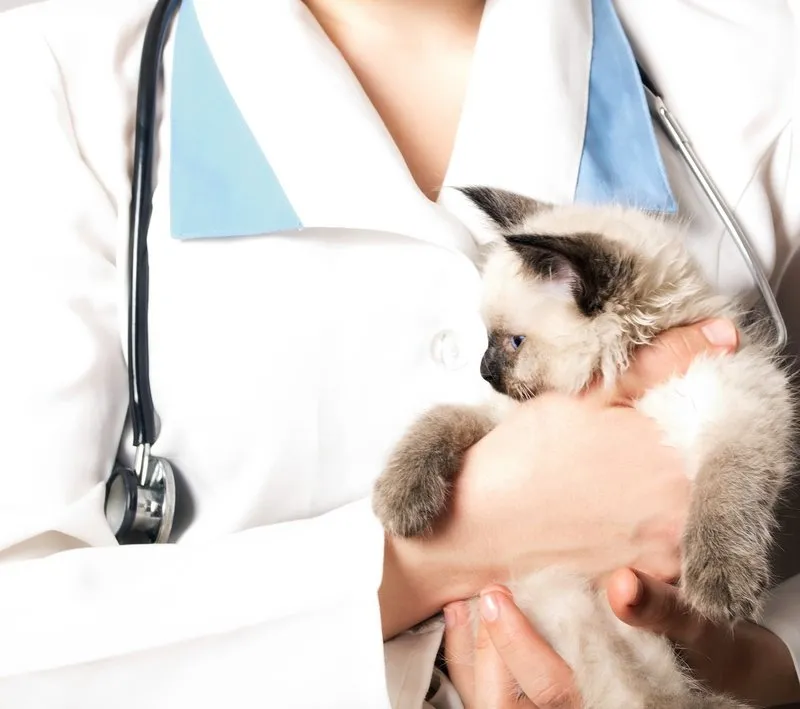Just like people, cats face a risk of developing arthritis as they get older. This painful condition develops when the tendons and ligaments that cushion and connect Fluffy’s bones wear out. Over time, they can get thin and lose elasticity, causing a lot of discomfort and pain. While arthritis isn’t curable, it can be managed. However, if the problem is caught early on, treatments may be more successful. Here are some signs to watch for:
Trouble Getting Up And Down
During Fluffy’s kitten years, she’s quite lithe and active, and easily jumps from the floor to the back of your chair. However, as kitty ages, she’ll become less resilient. If arthritis sets in, you may start to notice your furry buddy having trouble jumping onto your couch or bed.Stiffness
Your cute pet’s mobility can be seriously impacted by arthritis. Fluffy may seem stiff, especially when she’s first getting up or down. She may also start to limp, especially when she first gets up.
Difficulty Going Up And Down Stairs
Our feline pals can find stairs to be challenging. If you think about it, many stairs are taller than Fluffy! You may notice your cat really starting to struggle to get from one floor to another.
Sensitivity
Sometimes one joint or area is affected more than others with arthritic cats. Fluffy may react if you touch a sensitive area. She may also move away, flinch, withdraw, or even bite or hiss.
Aggression
Joint pain can greatly interfere with Fluffy’s mood, and can turn her from a cuddly, purring, snuggle bug to a hissing ball of rage. She may have arthritis, if your feline buddy is acting unusually aggressive.
Reduced Interest In Play
Fluffy is very playful, which is always a delight to see. However, joint pain can take away from those frisky kitty antics we all love.
Unkempt Fur
Cats with arthritis often have trouble grooming themselves with all the bending and stretching that’s involved. Fluffy may start to look a bit unkempt. (Tip: groom your furry pal gently, using a soft brush.)
Sleeping More Than Usual
This one can be hard to spot, since cats spend so much time sleeping. However, if Fluffy seems drowsier than normal, mention it to your vet.
Keep in mind that many of these symptoms can be related to many other medical issues. Contact your vet in West Greenwich, RI, if you notice any of these red flags in your kitty!
Our Advice on Signs Of Arthritis In Cats in 2024
What are the common signs of arthritis in cats?
Common signs of arthritis in cats include difficulty jumping onto furniture, stiffness, especially after resting, limping, and struggling with stairs. Cats may show sensitivity in certain joints, reacting negatively to touch. Behavioral changes such as increased aggression or reduced interest in play can also indicate arthritis. Affected cats might have unkempt fur due to difficulty grooming and may sleep more than usual. These symptoms reflect the pain and discomfort associated with arthritis, signaling a need for veterinary evaluation and potential management strategies to improve the cat’s quality of life.
How does arthritis affect a cat’s ability to jump onto furniture?
Arthritis in cats leads to joint pain and stiffness, significantly impairing their natural agility and flexibility. This discomfort makes it challenging to perform movements requiring strength and coordination, such as jumping onto furniture. Cats with arthritis may hesitate before jumping, jump less frequently, or stop attempting to jump altogether to avoid the pain associated with these activities. Over time, as the condition progresses, the decreased muscle use can further reduce their ability to jump and maintain an active lifestyle.
What behavioral changes might indicate arthritis in a cat?
Behavioral changes that indicate arthritis in a cat include increased aggression or irritability, as pain can make them more sensitive to touch and interaction. Reduced interest in play due to discomfort during movement is also common. Cats may become less active, avoid jumping or climbing, and struggle with routine activities like using the litter box or grooming, leading to an unkempt appearance. Additionally, cats may seek more rest than usual, often sleeping more to avoid the pain associated with movement.
Can sleeping more than usual be a sign of arthritis in cats?
Yes, sleeping more than usual can signify arthritis in cats. As arthritis causes pain and discomfort, mainly during movement, affected cats may rest or sleep more to avoid activities that exacerbate their pain. This increase in sleep or restfulness is a way for cats to cope with the discomfort associated with arthritis. While cats naturally sleep a lot, a noticeable uptick in sleeping habits, particularly if accompanied by other signs of arthritis, warrants a veterinary evaluation.
What should you do if you notice signs of arthritis in your cat?
If you notice signs of arthritis in your cat, such as difficulty jumping, stiffness, reduced activity, or increased rest, you must consult your veterinarian promptly. A professional assessment can confirm the presence of arthritis through physical examination, medical history, and imaging tests like X-rays. Your vet can then recommend a tailored management plan, including pain relief medications, dietary adjustments, supplements to support joint health, and modifications to your cat’s environment to ease mobility. Early intervention is critical to managing symptoms and maintaining your cat’s quality of life.





!Social Media Icons